As part of the TURBAN project, an accompanying measurement campaign is planned in selected parts of Prague (Fig. 1), which will serve to verify and improve software tools for microscale modelling of meteorology and air quality in the city (i.e. modelling in space of units of meters). These tools can then be used both for a detailed assessment of air quality and for planning measures to reduce thermal stress and air pollution in the city.
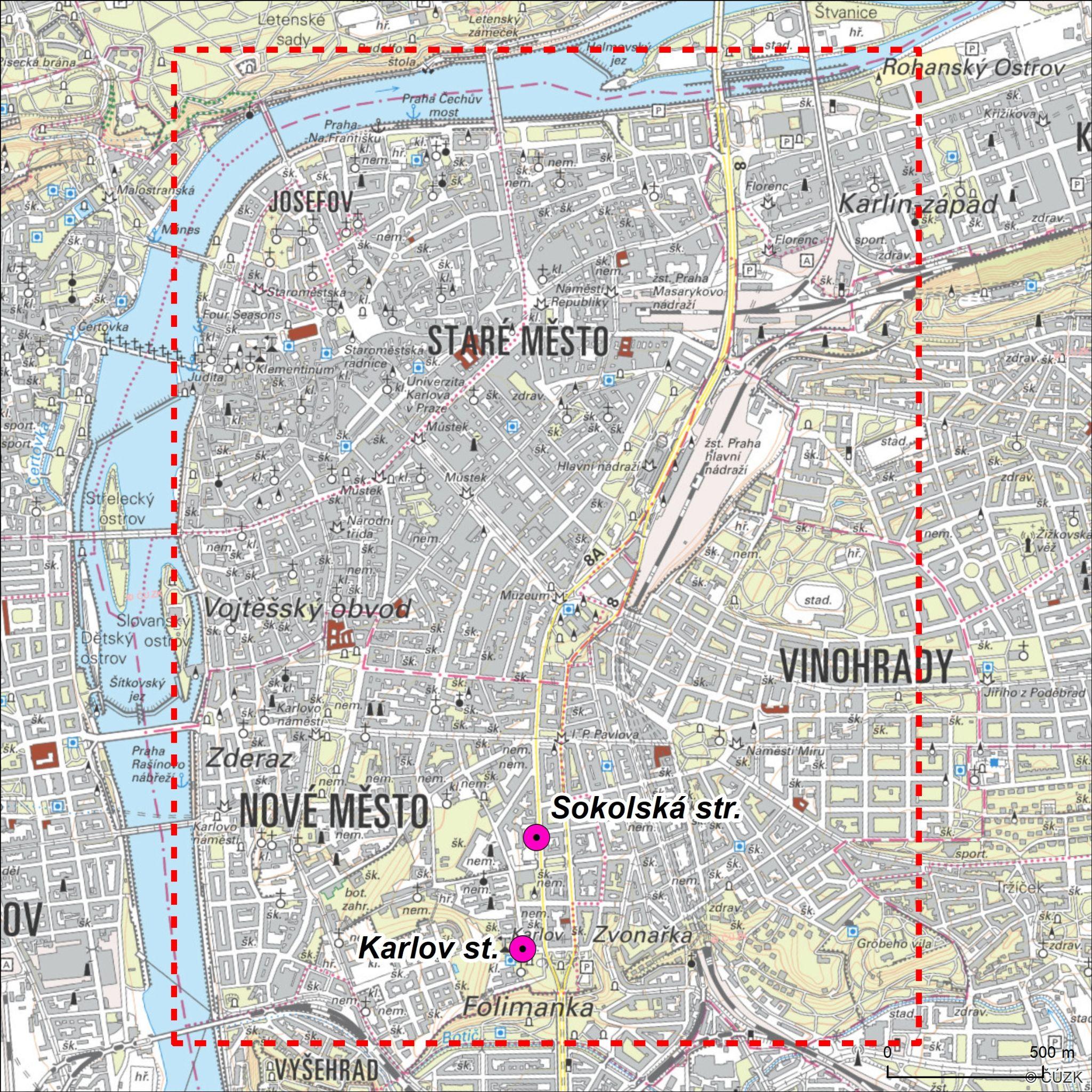 Fig. 1. Inner domain in Prague (red dashed line) with a location of interest close to Prague Karlov meteorological station and Sokolská and Legerova Street (pink points); background map is provided by Czech Cadastral Service as a WMS layer (© ČÚZK, 2022).
Fig. 1. Inner domain in Prague (red dashed line) with a location of interest close to Prague Karlov meteorological station and Sokolská and Legerova Street (pink points); background map is provided by Czech Cadastral Service as a WMS layer (© ČÚZK, 2022).
The accompanying measuring network includes 20 low-cost sensor stations for measuring concentrations of aerosol particles (PM2.5 and PM10) and NO2 and O3 gases, which have long burdened cities with higher traffic loads. The weight of one sensor station is less than 1.5 kg, dimensions approx. 20 × 12 × 20 cm (height × width × depth; Fig. 2). The devices do not disturb their surroundings, they are powered from the available electrical network (230 V) and are equipped with a system for remote data transmission.
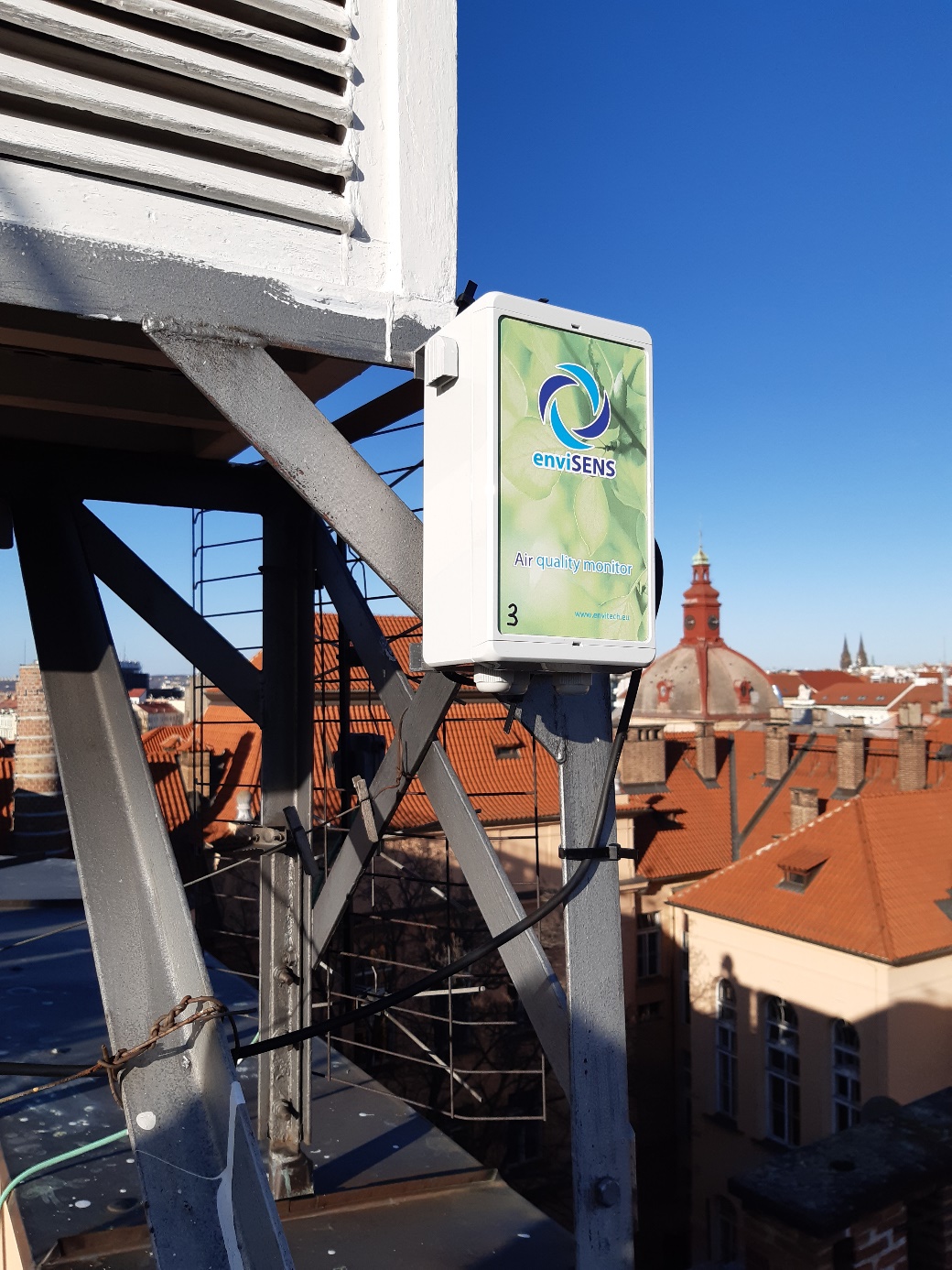 Fig. 2. Low cost air quality sensor station for measuring PM2.5, PM10, NO2 a O3 concentrations.
Fig. 2. Low cost air quality sensor station for measuring PM2.5, PM10, NO2 a O3 concentrations.
Due to higher uncertainty and more frequent occurrence of errors in sensory measurement in air quality monitoring, a comparative measurement was started at the Prague Libuš reference station at the end of 2021 (Fig. 3). During this measurement, the concentrations of PM2.5, PM10, NO2 and O3 measured by individual low-cost sensors and reference or equivalent analysers operated in the national air quality monitoring network were compared (Fig. 4 and 5). The aim of the comparative measurement was to identify and resolve technical issues (time synchronization, method of averaging the measured data, identification of defective pieces of equipment) and to calculate measurement deviations and correction factors for individual sensors (example Fig. 6). For the possibility of quality control of sensory measurement even during the subsequent measuring campaign at selected places, at least one sensor station was co-located at the Prague Legerova reference traffic station (Fig. 7).
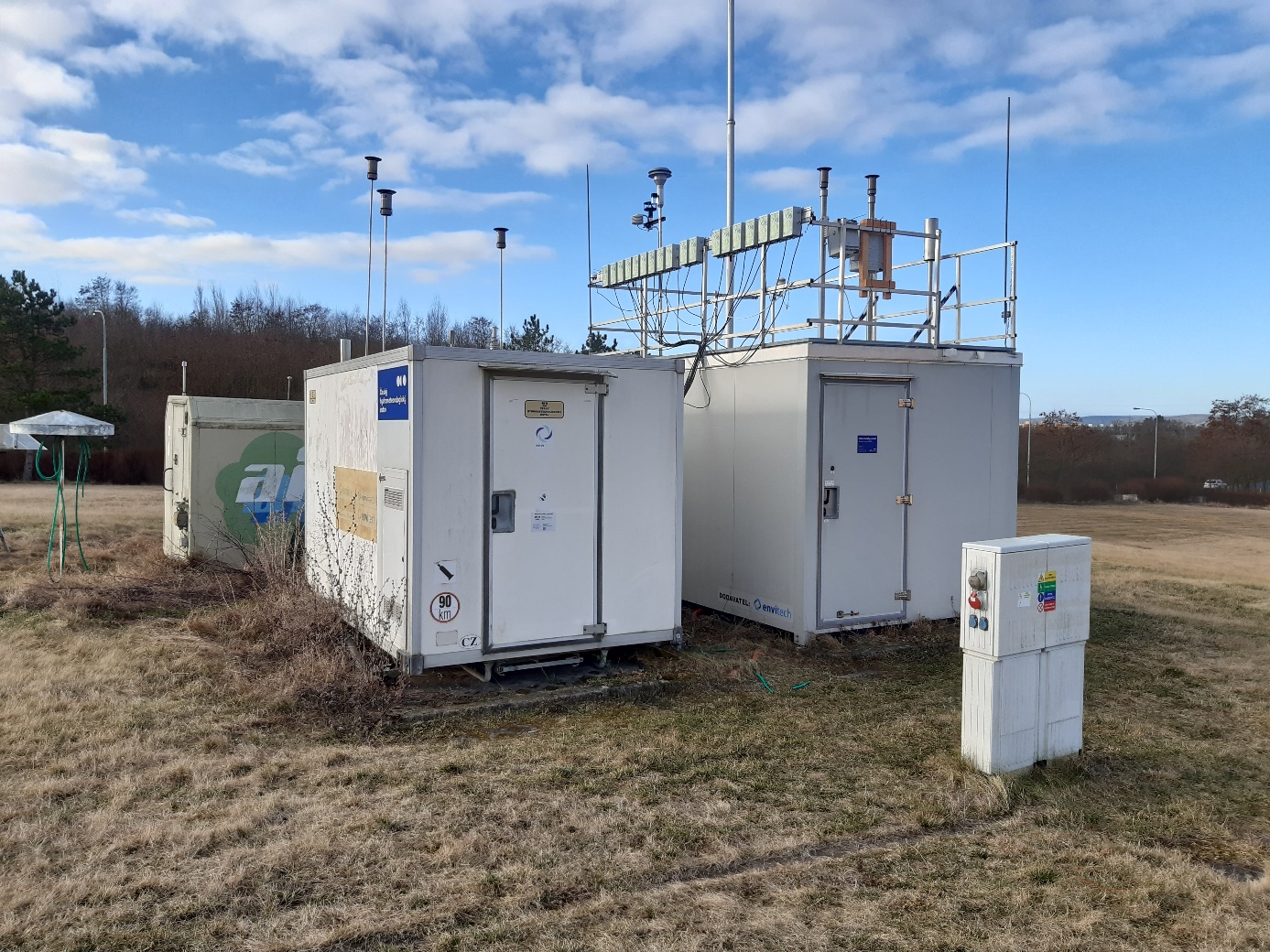 Fig. 3. The enviSENS sensor stations located at the Prague Libuš reference station for the purposes of comparative measurement.
Fig. 3. The enviSENS sensor stations located at the Prague Libuš reference station for the purposes of comparative measurement.
 Fig. 4. Courses of average hourly NO2 concentrations (ppb) measured by individual sensor stations (indicated by a number in the legend) and reference monitor (NO2_RM).
Fig. 4. Courses of average hourly NO2 concentrations (ppb) measured by individual sensor stations (indicated by a number in the legend) and reference monitor (NO2_RM).
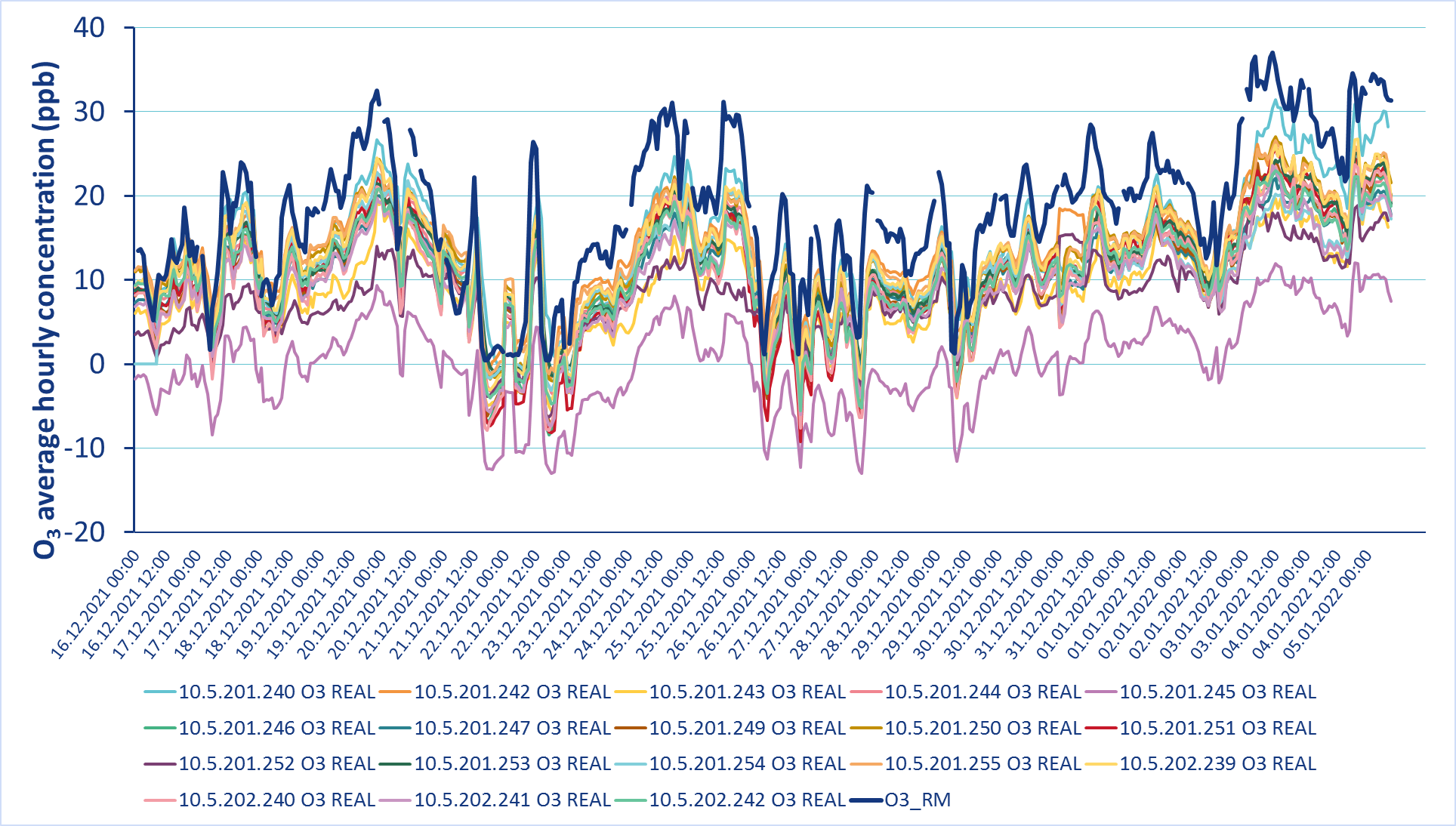 Fig. 5. Courses of average hourly O3 concentrations (ppb) measured by individual sensor stations (indicated by a number in the legend) and reference monitor (O3_RM).
Fig. 5. Courses of average hourly O3 concentrations (ppb) measured by individual sensor stations (indicated by a number in the legend) and reference monitor (O3_RM).
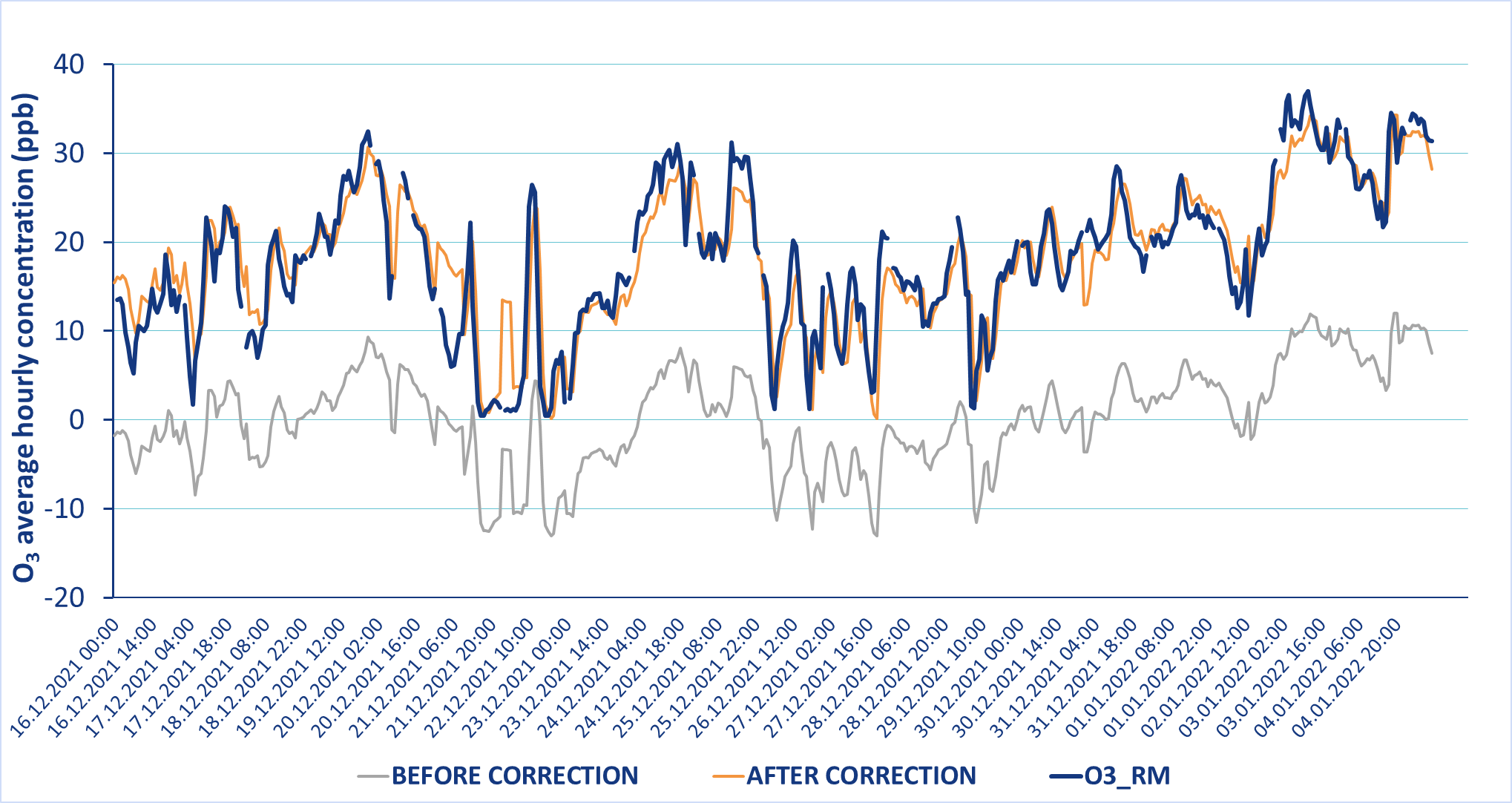 Fig. 6. Course of average hourly O3 concentrations (ppb) measured by the sensor before correction (grey line), after correction (orange line) and by the reference monitor (O3_RM; blue line).
Fig. 6. Course of average hourly O3 concentrations (ppb) measured by the sensor before correction (grey line), after correction (orange line) and by the reference monitor (O3_RM; blue line).
During the control comparative measurement, the specific locations for the sensor installation were also addressed. The main measuring campaign of the TURBAN project is located in the area between Wenceslas Square and Nuselský Bridge (around Sokolská and Legerova streets). Private and public entities were approached in this area with a request for cooperation. With cooperation successfully agreed the City District of Prague 2, the Czech Chamber of Authorized Engineers and Technicians in Construction (ČKAIT), the Prague Water Supply and Sewerage (PVK), the Budeč Dormitory and the Faculty of Mathematics and Physics of Charles University. These entities provided space for the placement of sensors or other measuring techniques. Due to the time-consuming negotiations, approval processes and technical preparations for the placement of sensors, most sensors will be installed to specific locations during the May 2022.
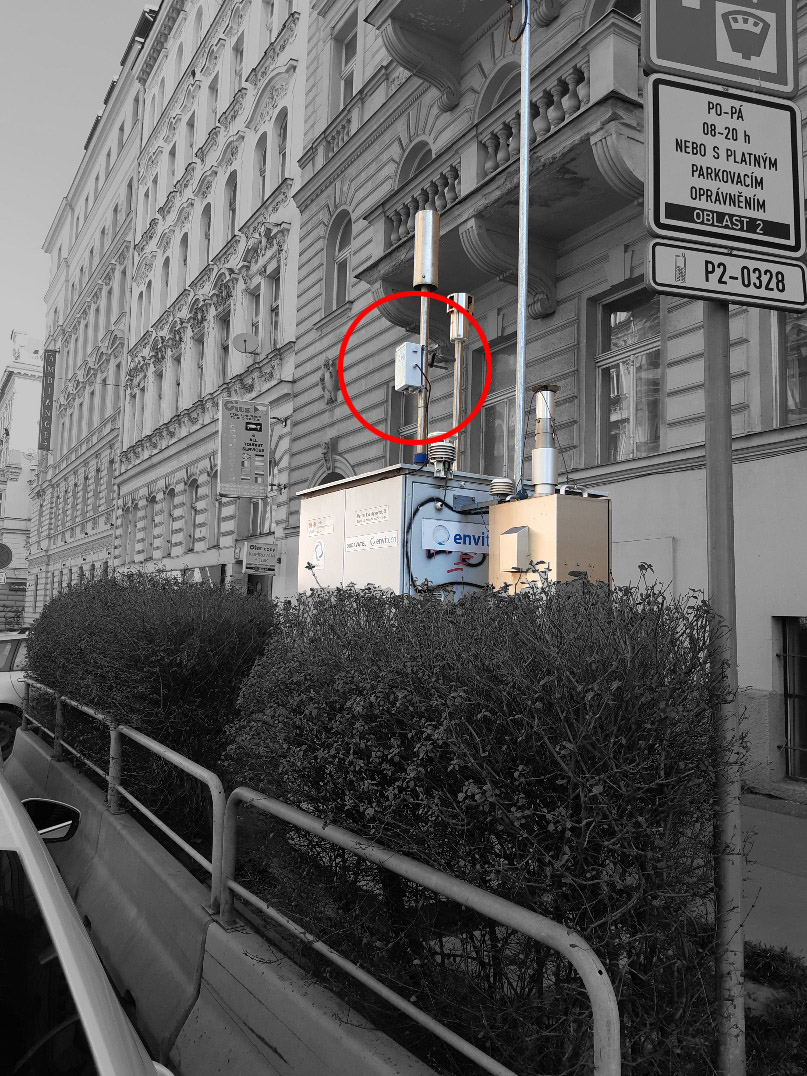 Fig. 7. The enviSENS sensor station located at the Prague Legerova traffic reference station for the purpose of comparison with the reference measurement in conditions with higher concentrations.
Fig. 7. The enviSENS sensor station located at the Prague Legerova traffic reference station for the purpose of comparison with the reference measurement in conditions with higher concentrations.
We are grateful to the Office of the Prague 2 City District, the Czech Chamber of Authorized Engineers and Technicians (ČKAIT), the Prague Water Supply and Sewerage (PVK), the Budeč Dormitory and the Faculty of Mathematics and Physics of Charles University, who provided space for sensors placement for the TURBAN project.